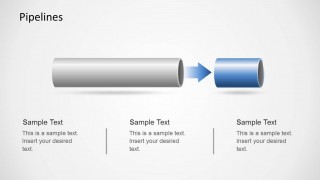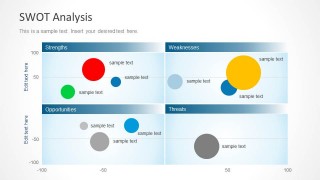Learn more how to embed presentation in WordPress
- Slides
- 14 slides
Published Sep 19, 2013 in
Business & Management
Direct Link :
Copy and paste the code below into your blog post or website
Copy URL
Embed into WordPress (learn more)
Comments
comments powered by DisqusPresentation Slides & Transcript
Presentation Slides & Transcript
General TermsS. 744 – Border Security, Economic Opportunity, and Immigration Modernization ActRPI – Registered Provisional ImmigrantLPR – Lawful Permanent Resident (“Green Card”)
Registered Provisional Immigrant - RightsYou’re approved for RPI status. Yay! You now have the following:RPI document/card w/photoLawful presence – a renewable 6-year legal statusWork authorizationSSNCannot be detainedIf in deportation proceedings, the proceeding will be terminatedAble to enlist in armed forcesAuthorization to travel outside of the U.S. for up to 180 daysCANNOT apply for federal public benefits, such as Medicare, Medicaid, food stamps, CHIP, Pell grants
How to lose RPI RightsKnowingly use RPI documents for fraudulent or illegal purposesAbsence from U.S. for over 180 days per yearBecoming deportable for certain crime-related reasons
Requirements for RPI - A 6-year Legal StatusHave been in the U.S. on or before Dec 31st, 2011*Maintain continuous presence until date of application’s release*Not owe taxes*Not be convicted of certain criminal offensesThere are no work or education requirements for the initial application, but this is required for renewal*Can be waived at the discretion of DHS; appeals also do exist if one is not approved for RPI
RPI – While You WaitYou’re eligible and paid the fee and fine. What rights do you have while you wait for approval?Can be granted advance parole to travelCannot be detained or removedNo accretion of time towards 3 and 10 year barsEmployer is not in violation of law if she/he continues to employ person
RPI – How soon can I apply?People can apply for RPI status within 1 year of the date of the application’s releaseThe Secretary of DHS can extend the deadline for another 18 monthsRPI status is renewable for 6 yearsRPIs can adjust to LPR status (green card) after 10 yearsAfter 3 years of LPR status, person is eligible for citizenshipThere will be no limit on the number of people who can become LPRs under the new system
RPI Application FeeDHS will determine the fee for the RPI applicationApplicants 16 or over have to pay a feeDHS can limit the maximum fee paid by a family if spouses and kids under 21 are applyingFees go towards paying for the cost of running the application programDHS may decide to exempt DACA recipients from the application fee
Fine/Penalty for Applying for RPI & LPRA fine/penalty must be paid that is separate from the application fee21 years & older - $1000 fine from no lawful status to RPISecretary can allow installment payment of $500 for initial 6-years of RPI, then the remaining $500 by the time of renewal$1000 fine when adjusting from RPI to LPRDREAMers are exempt from BOTH the $1000 penalty for RPI status and $1000 penalty for LPR statusThus, if one is a DREAMer and DACAmented, there is a possibility one may avoid both application fees and penalty
Requirements for Legal Permanent Residence (Green Card)In its simplest form, to transition from RPI to LPR:Must be working OR be enrolled in schoolPass a naturalization test
RPI & Prior Removal OrdersIf one is deported and subsequently re-entered before Dec. 31st, 2011 then they are safe so long as the other eligibility requirements are met.Only the following people may receive a waiver to apply for RPI status if they re-entered after Dec. 31st, 2011 or are currently outside the country due to deportation:Spouse, parent, or child of a US citizen or LPRA DREAMer – a person who initially entered the U.S. under the age of 16 andHas a high school diploma or GEDORIs 16 or older at time of applying and was physically present 3 out of the past 6 years (this is the option that could help deported DREAMers)
DREAMers’ Pathway to CitizenshipRemember that all undocumented immigrants must first apply for RPI status before becoming Legal Permanent Residents, and then citizens!Undocumented immigrants will have to wait 10 years before becoming LPRs, and then wait 3 years before becoming citizens.DREAMers have a shorter path: 5 years before becoming LPRs, and then immediate eligibility for citizenship. So what does it mean to be a DREAMer?
How do you qualify as a DREAMer?Entered the U.S. before age of 16 (no age cap)Obtain a high school diploma and list each high school attended; or obtained a GEDComplete at least 2 years of higher education or 4 years of military service*Submit biometrics and pass a background check*Unless person demonstrates compelling circumstances for inability to meet this requirementA provision of S744 also provides for in-state tuition to undocumented students
Border EnforcementInitial ImplementationWithin 6 months, Secretary of DHS would develop a strategy/plan to address the following goal:Catch 9 out of 10 immigrants who attempt to enter the U.S. (also referred to as 90% effectiveness rate) through:Increased surveillanceExtending existing fencingOnce the strategy is implemented and regulations are in place, the application process for RPI opensDHS will receive $3 billion to implement the plan & $1.5 billion for border fencing alone
Border Enforcement90% effectiveness rate must be reached in order for RPIs to apply for LPR statusThis is tied in with the following border enforcement measures simultaneously:US-Mexico surveillance has to be “substantially operational”E-verify will have mandatory implementationDHS must be using an electronic system for recording entry and exitIf 90% effectiveness rate is NOT reached within 5 years, then an advisory commission will be established to decide how to spend another $2 billion on items such as personnel, infrastructure, technology, etc.If 90% effectiveness rate is NOT achieved after 10 years, then LPRs will finally be allowed to apply for LPR status regardless of the failed goal






